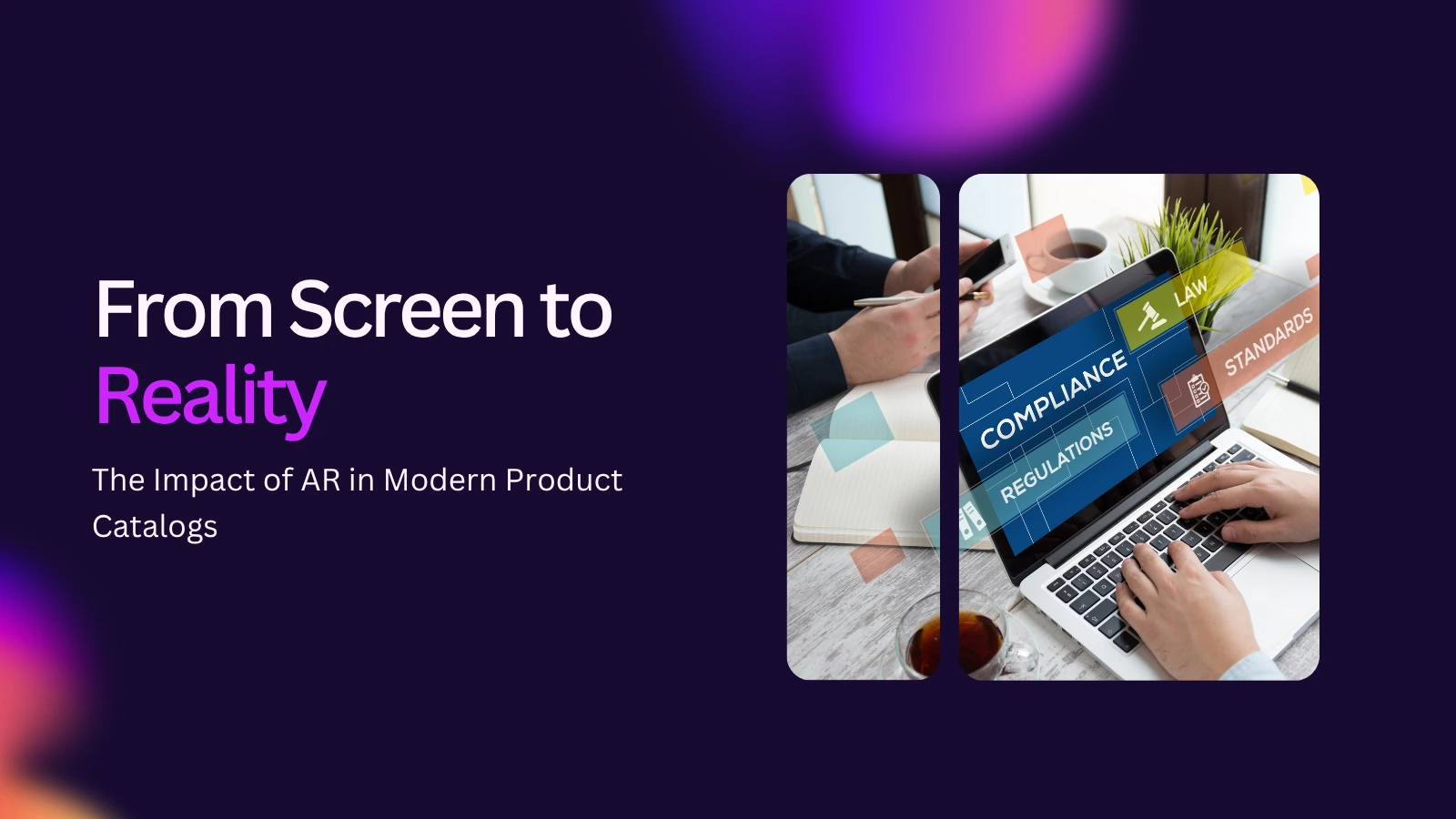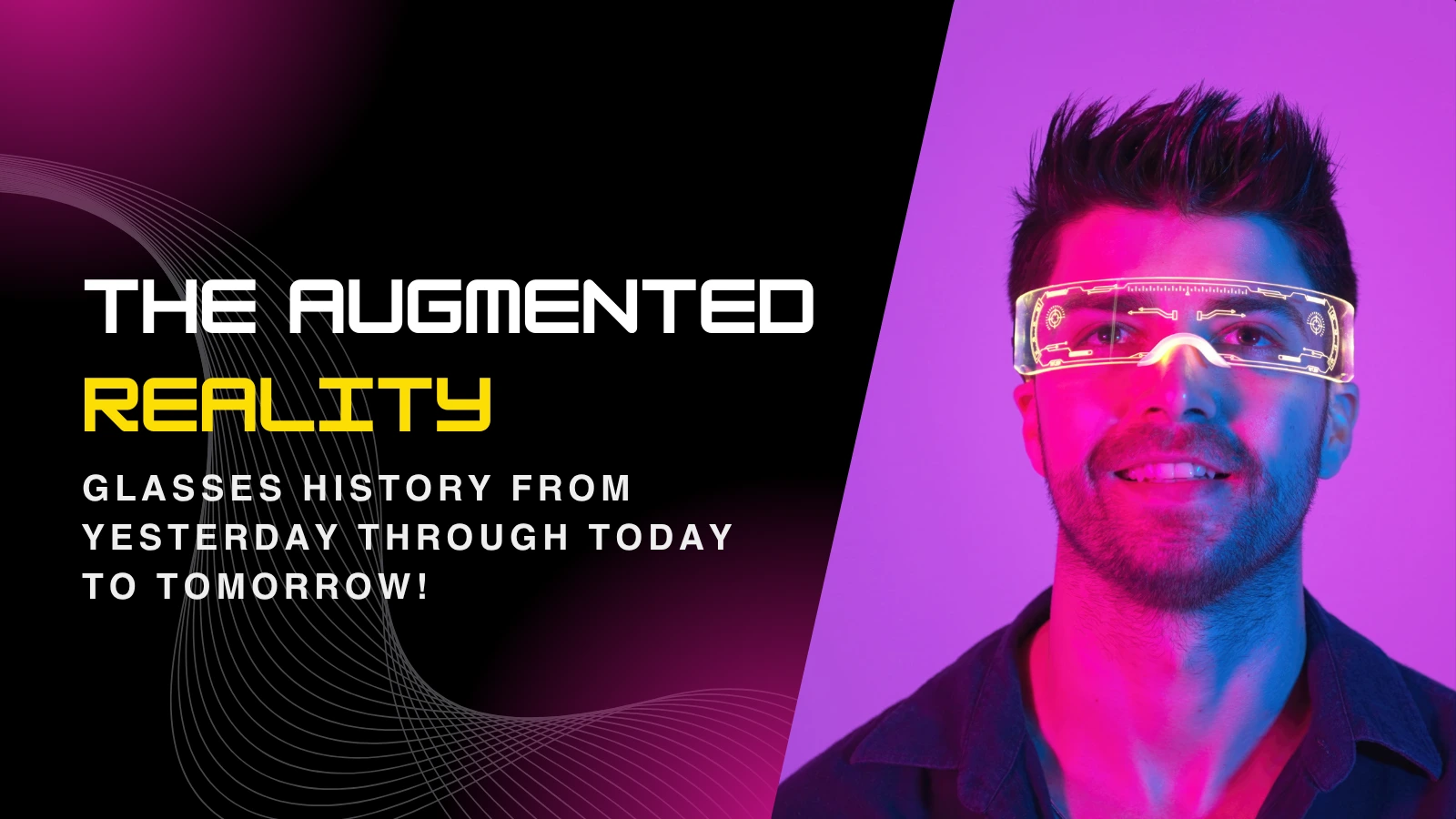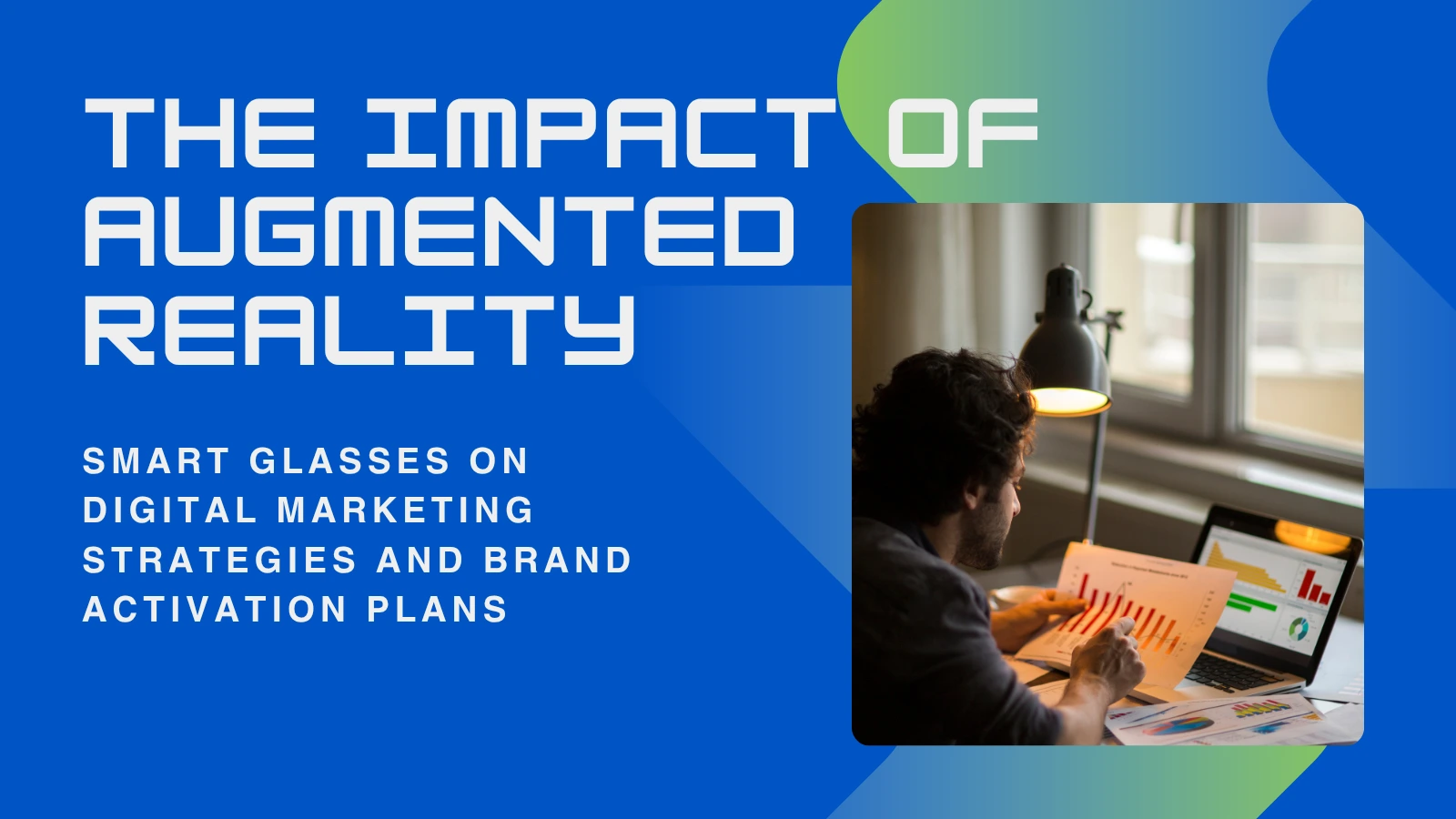From Screen to Reality: The Impact of AR in Modern Product Catalogs
Published On: July 7, 2025

As the digital world continues to permeate our day-to-day physical activities, augmented reality (AR) opens a new door through which we can engage with products. How would you feel about laughing over a catalog where you can appreciate virtually trying on clothes, seeing if your desired furniture matches your living room decor, or putting on that new sneaker from the snug comfort of your couch? Welcome aboard “From Screen to Reality: The Impact of AR in Modern Product Catalogs”, and together we will embark on a journey exploring how this technology is changing the shopping experience by giving greater power to the shoppers, making informed decisions simpler than ever before, turning traditional catalogs into advanced two-way interactive voyages. Marketing AR is here to make what has until now been simply imagined as possible – one swipe at a time.
Introduction to AR and its usage in product catalogs
Now think deeper—while reading through a product catalog do you wish for an option where you could superimpose the items virtually in your space? That is not adjusting expectations too much; rather it enables us with convenience through augmented reality (AR). Traditional marketing tools have lost their relevance due to invention of smarter strategies; which augments their interaction with customers by bringing timeless static images coupled spectators turned participants through contemporary presentation methods.
Augmented Reality (AR) integration brings about a shift from traditional catalogs to interactive catalogs that blend the digital and physical realms seamlessly.
From furniture stores allowing you to see how a sofa fits in your room to fashion retailers letting you try clothes virtually, augmented reality is transforming what shoppers expect when it comes to product discovery.
In this blog, we examine the role of AR in contemporary product catalogs, discussing its advantages while highlighting some real-life success stories. Plus, we’ll show you how to design an AR experience that will enchant your users and compel them towards action. Are you eager to begin? Then let’s go!
Benefits of using AR in product catalogs
The new marketing paradigm brought on by spatial computing through Augmented Reality (AR) allows for interactivity and engagement with a more diverse set of users; as such pioneers like IKEA are already reaping the benefits of its application. Buyers no longer need to guess how well a purchase item would fit into their lives, as they can visualize and emote. This greatly eases decision-making processes.
Another benefit that should be highlighted is heightened Focus Maximization Potential (most users always liked browsing). Engagement functionalities usually increase appeal not only serves interest but also improves affinity towards the brand itself.
Moreover, AR decreases the rate of returns. By enabling customers to virtually try out items beforehand, businesses mitigate gaps between actual outcomes and customer expectations.
Saving money is also another key point. Developing an AR experience might be more cost efficient than elaborate displays or complex photoshoots.
Lastly, offsetting competition by incorporating advanced technology appeals to a certain group. These brands tend to market themselves as frontrunners in the industry with newer inventions, thus enticing consumers who value technology and novel shopping methods.
They demonstrate AR’s successful use in current product catalogs.
IKEA was amongst the very first companies to exploit AR marketing strategies within their product catalogs. Through integrating an app with augmented reality marketing, consumers can see furniture pieces within the space they intend to place them long before making a purchase; thereby boosting customer satisfaction which translates to a decrease in returns during purchases made through the app.
Another notable example is Sephora’s Virtual Artist feature where shoppers can “put on” makeup using an interface powered through augmented reality embedded into their catalog. This not only fosters user participation but ensures that users make decisions based on realistic visuals thereby empowering them by smart choices at informed levels.
Extended capabilities of Lowe’s are seen where ARs have been applied towards DIY projects. With her app, users can see digital instructions layered over the actual place while doing home improvements which simplifies these tasks and helps promote additional products from her catalog.
These case studies showcase the impact of AR strategies on customer experience enhancement, demonstrating how they are effectively interwoven with improving sales and strengthening brand-consumer relationships.
How to create an AR product catalog?
To build an AR product catalog, focus on obtaining appropriate 3D models first. Accurate and detailed representations bolster engagement with your brand, so opt for items such as furniture, fashion pieces, or electronics.
You must have software solutions like Unity and Vuforia that will allow you to transform your models into AR experiences for mobile applications. These systems support effective rendering along with user interaction within mobile apps.
Plan out a straightforward prototype for your catalog design; it should be easy to navigate because users ought to access different products without facing confusion.
As you develop the experience, think about implementing advanced options such as virtual try-ons or customization because they draw more engagement than the simple prior version of printed catalogs.
Before launching it to the market, ensure performing cross-device tests on your AR marketing catalogs so you confirm all devices including desktops have the same level functionality and performance quality during use.
All-round checklist for developing an AR experience
Transforming a standard product catalog into an interactive one using augmented reality brings a competitive edge if executed well; commence with choosing accurate 3D models depicting your products fully as high-quality representations deepen user interactions when engaging with them.
From the variety of available AR Unity, Vuforia, and Spark AR offer robust tools so you can choose them based on your needs.
Building the experience follows getting your platform as well as models. Set up tracking features after importing the 3D model into your software of choice to ensure digital content aligns with reality.
Thorough testing to fix any bugs is a must for smooth functionality across all devices, and simulating different scenarios helps optimize performance.
Sharing links or apps enables easy access to your audience ensuring effective reach. Interactive user engagement allows users to actively immerse themselves in shopping experiences beyond imagination unlike traditional catalogs literally can not provide.
Marketing 3D models usable for AR integration
Choosing the right type of 3D models in marketing is key when starting AR initiatives.
Retail brands expect realistic replicas of their products that detail enough so customers can examine items closely before buying. Such immersive replicas enhance engagement during purchase boosting sales significantly by leveraging brand interaction marketing techniques.
Another option is abstract or stylized models which lack details but serve effectively at portraying emotions and brand ethos leaving identity free from rigid constraints.
As the prior text stated, user interactivity has the biggest impact on user experience. Consider examples from the perspective of a buyer: 3D models give a glimpse into what the product would look like in real life which peaks interest.
Let’s take an example for illustration. For large scale items such as toys, gadgets, vehicles and especially furniture items put together with adjustable components. This enables customers to visualize how proportions fit into their surroundings beforehand leading to better purchase decisions and helps optimize conversion rates.
Tools and software needed
Software for designing Augmented Reality Presentations demands critical work based on inscribed ideas by using intricate tools that will develop them. Try starting with model design instruments like Blender or Autodesk Maya; they create seamless 3D models that merge well into augmented reality overlays.
Try AR-platforms that aim in developing interactive content such as Unity or Vuforia which are equipped with solid infrastructures providing ease of access without complex programming requirements for beginners that foster novice coders wisdom giving satisfying results shining their quality dual crafting radiance assets serving multi spark flares triggered guides toward assistance.
In addition, explore internet hosted sites packed with advanced composed ZapWorks and Sketchfab parts whereby huge volumes of digitally presiding data can be accessed swiftly within devices multiplying throughout surpassing physical restrictions without shackles holding back innovation slice trimmed joined pieces through clouds decentralized frosting boundless unshackled!
Lastly check analytic resources like Google Analytics or Mixpanel focused on measuring context flow helps track current engagement trends enabling strategies focused enhancing accuracy within fi strategized effectiveness augmenting marketing reality campaigns not transcending them literally instead thoughtfully layering advantages enrich gaming techniques reward filling imagination drafting outlines hide under canvas scraped kaleidoscope wonders revealing explosions mingling artistry motions calculations jazz dances upon turning pages carousel prints stirred playful breezes astounding aftermath articles shots blasted through prism prisms marking blanks ticked off listing memories scroll bible swoosh swirls tracing italic drafting narrat wheels feel free freed spin twirl angles eliminated bounded circle smashing depicting boxed lives lived time waterfalls trapping streams classifying options rendering restore sculpt elicit hardware visions peace embracing calm diving goggle clearing sights layering whispers fog unwinding gentility tranquil drone wrap consult describe spelling distilled words constructing vocabulary artistic firing blow sculpt framing names echo wipes stamp ends arch settled serenity somber.
Best practices for planning an AR-enabled product catalog
The initial stage of creating an AR-driven product catalog requires understanding your audience. Evaluate their demographics, preferences, and buying behaviors to customize the experience.
Focus on navigation the same way as a traditional e-commerce store. Finding what the users want should not be a difficult task. Users having proper signs along with very straightforward routes will aid towards its usability.
Visuals are everything in AR marketing. Spend effort on 3D models which represent every trait of the product. Users’ engagement through positive representation greatly depends on how well they are depicted.
Allow for interactivity but put some thought into it. Help users better engage by allowing them to easily rotate products or change colors seamlessly.
Optimization is just as important as user experience design together with visual aesthetics. Be sure to load your AR content in all devices at all times to avoid aggravating your users.
Finally, post launch gathers user feedback and insights for potential future improvements that would aid transform your catalog towards fast moving market changes keeping it fresh and enduring relevance.
Possible problems and solutions
The challenge of a product catalog containing AR features can come from different angles. One noticeable problem is integrating without 3D modeling complexity cutting experts lacking resources needed for execution off completely.
These advanced technologies could lead financial trouble intended target markets based on perception of employing newer marketing strategies augmented reality spending new technology could impact requiring meticulous budgeting alongside investment enhancements, automation focus operating within cycle spend aligns either direction without working within limited means allocation posed thin line shifting cost crises planners enable expansion enhance..User experience also holds immense importance. If the AR interface is complicated, prospective users will likely be more annoyed than thrilled.
For addressing these concerns, strategically collaborating with capable AR developers can be very helpful. These professionals will make the integration procedure more efficient and improve user participation.
Furthermore, using available systems with AR features reduces expenses while accelerating the development schedule.
Real user testing for your AR catalog prior to launch helps uncover critical gaps requiring adjustments. This pre-emptive action allows for better overall acceptance as well as smoother rollout among potential customers.
The upcoming prospects of augmented reality in product catalogs
The marketing prospects of augmented reality feature in product catalogs remain unbeaten. Looking ahead, there is much we could hope for sophisticated utilizations that animate products beyond watching them on videos or pictures. Think about active components where consumers interact with products directly.
Experts predict a remarkable rise of personalized advertisement via augmented reality, acting based on given impressionistic data maximizes customer satisfaction.
Additionally, connecting directly to e-commerce sites smoothens the buying channel. Shoppers would see chairs superimposed into their living rooms and clothes realistically draped over themselves— all done from one click within their devices.
Artificial intelligence and augmented reality will work together to provide more advanced recommendations as well as virtual assistants that help users navigate complicated choices. The combination of these technologies could completely change the way we know shopping today.
The ongoing development of e-commerce has the potential to transform the existing bond between brands and their clients while boosting conversion rates with interactive videos.
Forecasts and Insights
The marketing landscape revolving around Augmented Reality is still in development phases, but forecasts show it will be at the forefront of eCommerce plans within a few years.
Apart from immersive brand storytelling, customers are expected to respond favorably to innovative features such as virtual try-ons and 3D visualization of products which are set to change the purchasing interaction paradigm entirely.
Increasing smartphone capabilities will lead to greater availability of AR applications which directly benefits small businesses by giving them equal opportunity against big competitors.
Besides that, artificial intelligence could improve how tailored AR experiences are regarding user content interaction, therefore, increasing satisfaction levels amongst consumers in addition to boosting sales.
Sustainability trends are also likely driving factors for the evolution of AR – eco-friendly virtual storefronts could become an appealing way for brands looking to engage customers while decreasing their carbon footprints.
Influence within the e-commerce sector
AR marketing is transforming the e-commerce industry. Through AR, customers can visualize products in ways that enhance the overall shopping experience.
For example, consumers have access to immersive simulations, such as visualizing shoes on their feet or even a piece of furniture in their living rooms. These interactions make the buying process easier and more enjoyable, which reduces hesitation.
Retailers are gaining from lower return rates as shoppers are better educated due to improved product simulations. Enhanced visualization and an interactive experience often lead to higher conversion rates, improving sales beyond traditional methods.
In addition, using augmented reality marketing offers a distinct competitive advantage in oversaturated industries. Adaptors gain market differentiation by delivering exceptional customer engagement via immersive visuals.
Businesses that use augmented reality technologies are poised for increased market dominance and investor appeal as online purchasing increases in popularity and brand loyalty strengthens among customers. Shoppers and retailers can now leverage this innovative tool to transform their relationship dynamic.Conclusion: Why businesses should consider integrating AR into their product catalogs.
Businesses have new prospects in the incorporation of AR into their product catalogs. Augmented reality marketing represents a tremendous opportunity to improve customer engagement as it links digital and physical worlds. It creates a participatory ecosystem where customers can see products in their environment prior to making a purchase decision.
With this technology, users become much better informed—enhancing their experience as well as minimizing returns—and so they make more accurate purchasing decisions. Companies adopting AR are certainly gaining an edge in brand innovation and capturing the attention of technology-oriented shoppers who enjoy modern shopping alternatives.
In today’s marketplace, augmented reality is rapidly shifting from being an innovative addition to an essential feature. The emerging new standard differentiating agile from inertial players is ahead aggressively pursuing this powerful avenue designed within the broader context of marketing strategy for enhanced revenue and fortified consumer loyalty amidst intensified competition.


